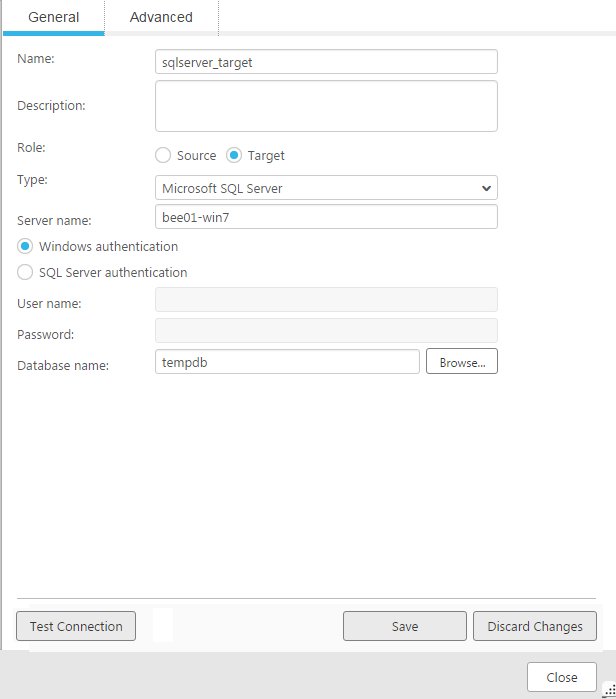Add a Microsoft SQL Server database as a target
This task guides you through adding and configuring a Microsoft SQL Server endpoint as the target database connection. This is the database to where you want to replicate data.
To add a Microsoft SQL Server target endpoint:
-
In Tasks view, click Manage Endpoint Connections.
The Manage Endpoint Connections dialog box opens.
- Click New Endpoint Connection.
- Provide the following information:
- Name: Type sqlserver_target.
- Description: Optionally, enter a description or leave blank.
- Role: Select Target.
Server name: Enter the name of the computer where your Microsoft SQL Server database is installed.
For example, if you connect to a Microsoft SQL Server database on a computer called
bee, enter bee.- Select one of the following:
- Windows authentication if your Microsoft SQL Server database is configured to accept Windows authentication.
- Microsoft SQL Server authentication if your Microsoft SQL Server database is not configured to accept Windows authentication. In this case, you also need to provide a valid user name and password.
- Database name: Enter tempdb, which is the name of the database to where you are going to replicate data. If you created a new database for this purpose, enter the name of that database.

- Click Test Connection to verify the information you entered and the availability of the database.
- Click Save to add the database.
You can also set advanced settings for the Microsoft SQL Server database, but this is beyond the scope of this tutorial. For more information, see Setting advanced connection properties.
For information on adding other types of databases, see the chapter for the required database. For a list of supported databases, see Supported Platforms and Endpoints.
